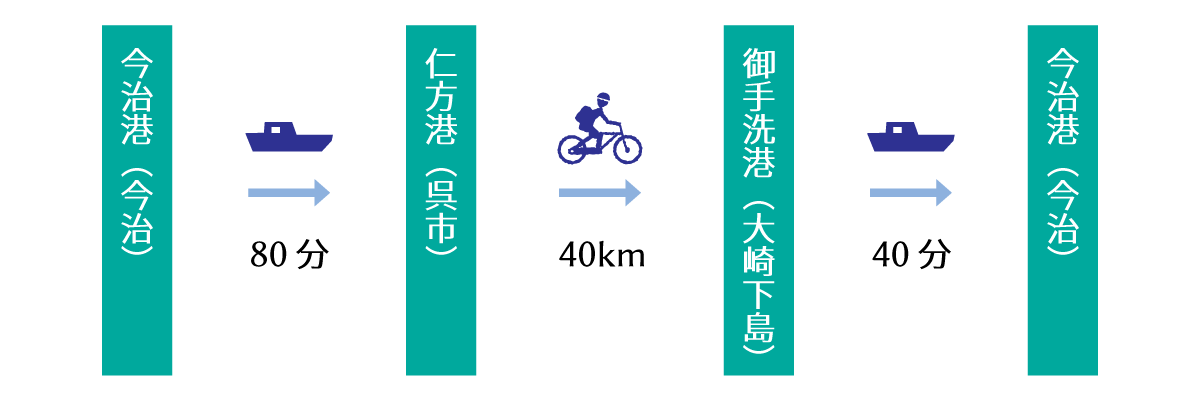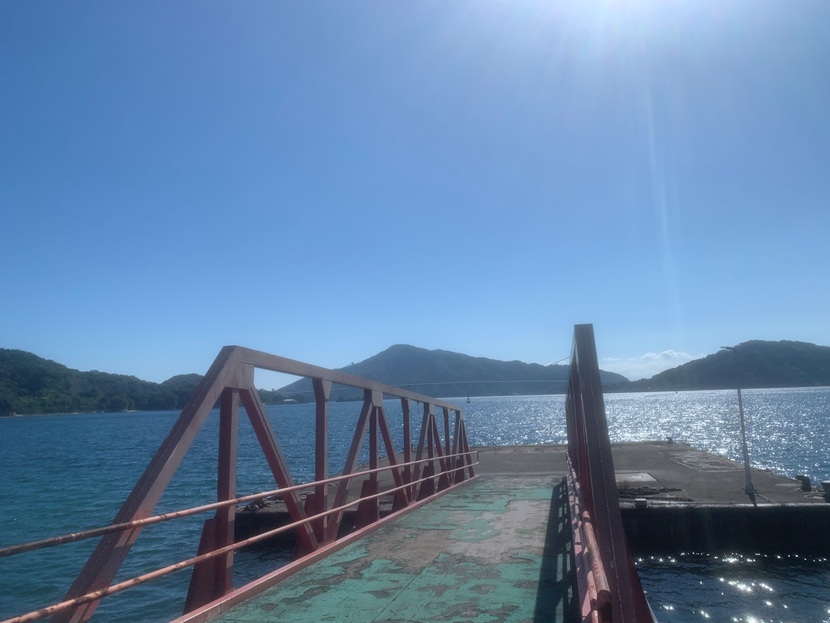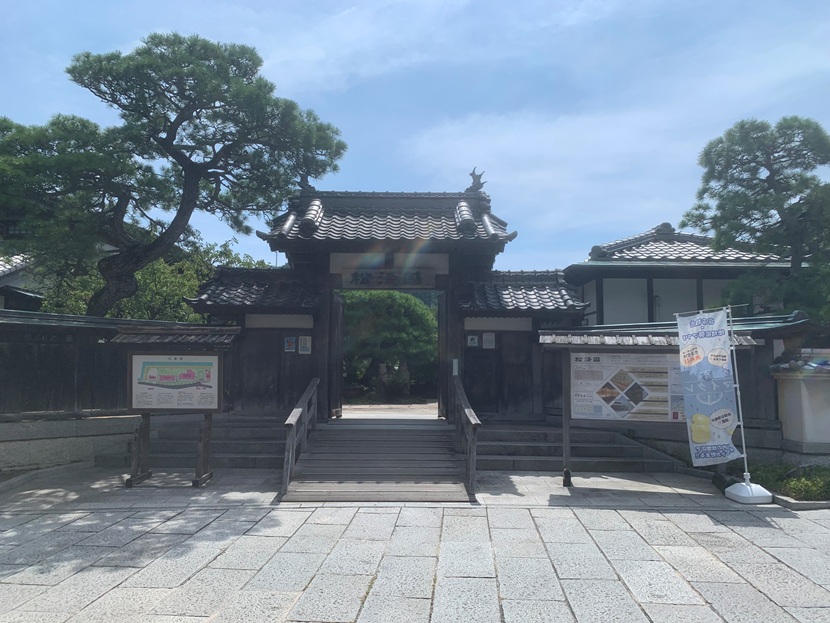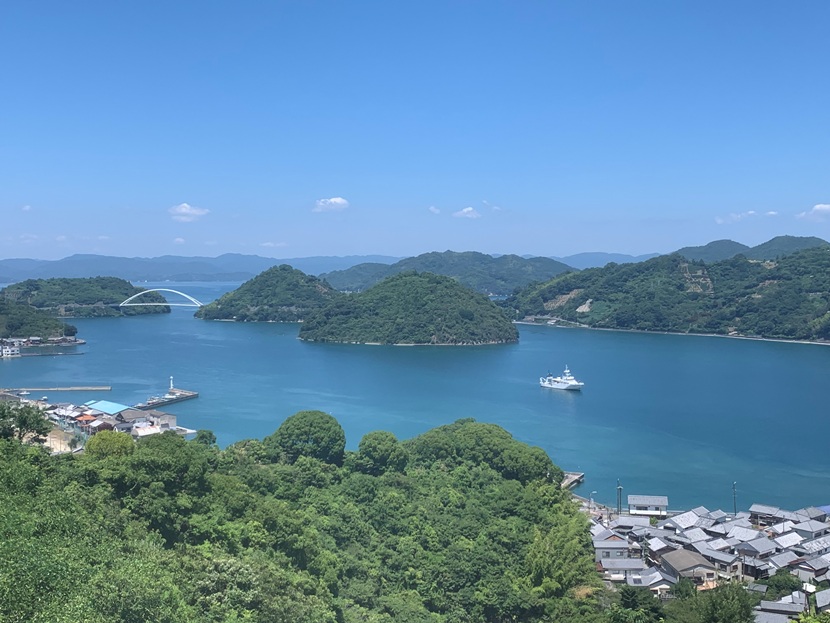"Cycleship Shimanami"
main route

One-way Tobishima Kaido starting from Imabari
If you are going for a Tobishima Kaido cycling departing from and arriving at Imabari, you will usually need to go back and forth to Okamura Port. This course uses Cycle Ship Shimanami to enjoy the Tobishima Kaido in one way. We utilize Nikata Port and Mitarai Port, which do not have regular routes. You can cycle freely between Nikata and Mitarai within the time limit, and you can also visit Mitarai at the end.
For individual travel
Tobishima Sea Road




Route map

Cycling information
| Distance | Approx. 40km (running time: approx. 4-5 hours) |
|---|---|
| Difficulty | Beginners are OK too |
| Things to note | There are uphill slopes on each bridge on the Tobishima Kaido. You can arrange the route based on your running ability. |

A magnificent bridge that connects them with the islands scattered across the beautiful sea.
The beauty of the Shimanami Kaido is a blend of rich nature and people's lives, giving us time to relax.
We read the scenery of the Shimanami Kaido as "Shimanami Scenes."


Kure City
Nikata Port




Nikata also comes from the origin of Niigata. Surrounded by mountains on three sides, the lagoon that emerges at the mouth of the Nishiki River is reborn as an industrial park, and Pier Street is brought to Nikata Port. The pier and waiting room overlooking Aki Nada, where the waves are calm. There was a time when a railway ferry connecting Horie Port (Matsuyama) in Shikoku was departing and arriving from this port, which is now a relaxing space for locals. Although he was a supporting role as a "forgotten railway ferry" for 36 years up to 1982 (Showa 57), his voyage that connects 38km in 1 hour and 40 minutes surpassed the Utaka route (21km, 60 minutes *23 minutes by hovercraft), making him the second most talented route to the Seikan route (113km, 3 hours and 50 minutes). Nikata Port, the first station on the "local sea line (ship)," where two flights a day traveled around Aki Nada, is revived.
Shimogamagari Island
Minose




A key point for ancient maritime traffic, where tides from the east, west and southwest converge. In the early Edo period, Hiroshima Domain lord Fukushima Masanori built the Nagarki "Fukushima Ganki" and developed the main shrine, bansho and tea house. It is a sea station (sea post town) that not only sankinkotai, but also foreign envoys from Korea, Ryukyu, and the Netherlands call in the countryside. As the large-scale buildings restored along the Sannose Seto run through the wide cobblestone roads, the 480m truss bridge, Kamagari Ohashi Bridge, is dynamically flapping the sky. The landscape that blends with ancient times, early modern times and modern times is a profound tradition that combines history, culture and people, brought to you from the east, west and southwest. Through the times, cyclists traveled through the Akinada Tobishima Kaido, the "Ginry of the Ginry" - the "Envoy of the Silver Ring" traveled through the Akinada Tobishima Kaido.



Osaki Shimojima
Historical Hill Park




It took about 30 minutes to sweat from Mitarai's town. A heartwarming sight will reward you with a 100-fold return. Not only is the town of Mitarai, but also the orange fields swaying to the sky on Osaki Shimojima and Okamura Island, the ports waiting to be tide like sandstones, the islands of the Seto Inland Sea, the Kurushima Kaido Bridge, which runs white through the ocean, the Ishizuchi Mountains of Shikoku, the Takayama mountain range of mountains in Shikoku, and the ships sailing through these as borrowed views...The Seto Inland Sea is truly for me! This observation deck is recommended for those with plenty of time and energy to spare, and is a smile on the god of scenery.











